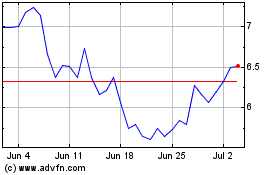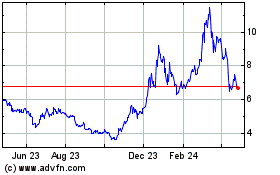Why Flux Is Set To Become The Hub For The Web3 Solutions Of The Future
November 29 2021 - 4:52AM
NEWSBTC
Since its inception, blockchain technology has seen an explosion in
products, projects, and use cases and has managed to attract
millions of users. However, the industry is dispersed and seems to
have lost focus on the problems it tries to solve. Innovation still
runs deep on the blockchain-based industry within a select group of
projects with a deeper understanding and vision on the future of
its underlying technology: to become the future of the internet. In
that sense, the Flux ecosystem has emerged as a tough competitor to
become the infrastructure that will support that future. This suite
of decentralized computing and blockchain-as-a-service (BaSS)
solutions with similarities to the Amazon Web Service (AWS) is
comprised of its own cloud operating system based on Linux called
FluxOS, a Proof-of-Work (PoW) utility cryptocurrency, and
enterprise-grade server hardware hosting the Fluxnode network and
the entire ecosystem. Every component on the network operates in
perfect harmony to create the right incentives that power the Flux
ecosystem, mitigate bad actors from attacking it, provide users
with an on-chain governance model, and reward miners, node
operators and holders. The Flux ecosystem is one of those projects
with a long-term vision of onboarding new users into the crypto
space by providing real solutions, a critical infrastructure that
can support it, easy interoperable development tools, and a vast
inventory of use cases for the benefits of the users. In that way,
the project seeks to usher in a sustainable new wave of crypto
adoption. The Flux Ecosystem And Its Advantages Over Competitors As
mentioned, there are many projects trying to tackle different use
cases, many more attempting to become the main platform for cloud
services and solutions. On Ethereum, many of these projects face
limitations in terms of high transaction fees and low scalability.
Other blockchain-based cloud service providers, such as the
recently launched Internet Computer (ICP), have complicated nodes
mechanism and requirements that users need to fulfill in order to
become a network participant. In addition, they are components in
these platforms that seem centralized with their ecosystem relying
on single points of failure. The Flux ecosystem eliminates these
tradeoffs with an innovative model that allows any FLUX holder that
meets the hardware requirements to participate in the network.
These users allow Flux to operate as a completely decentralized
platform without a single point of attack as its nodes are
distributed around the globe. According to Flux’s whitepaper: With
FluxNodes, the goal has always been to have thousands of potential
nodes operating on the network, allowing anyone to participate and
solve the scalability issue through available raw processing power.
Flux, The Future Of Cloud Services In The Hands Of The People Flux
has already partnered with prominent names to host and decentralize
their infrastructure, a trusted partner is the Kadena blockchain
who has a long-running partnership with Flux to deliver their
infrastructure, blockchains Firo and Presearch have also partnered
with Flux. In addition, Flux supports many other key players in
blockchain by helping decentralize their infrastructure, some
examples are Coinbase Rosetta, Polkadot and Kusama nodes running on
the Flux network. The Flux ecosystem already host decentralized
social media solutions such as an alternative privacy-focused
frontend for Twitter and the Dropalo messaging project; its own
decentralized cryptocurrency price oracle services, so users can
have access to real-world data on the blockchain; a great selection
of games and game servers, such as Minecraft servers; and the
ecosystem enables interoperable capabilities for users to transact
with other blockchains and power their smart contracts.
Furthermore, the Flux ecosystem is run with aid from its community.
As the industry enters an era of institutional participation, many
in the crypto space fear that Wall Street and other giants could
take over and push their own agendas for the detriment of the
users. As a community-driven and open-source project, Flux is fully
transparent and focused on community empowerment, major decisions
are made by the community using the Flux xDAO (decentralized
autonomous organization) governance. In that sense, Flux has gone
to great efforts to consolidate its partnerships with global
leaders across multiple sectors and become more and more accessible
for corporate adoption. This has been achieved while preserving the
principles that support the crypto industry at its inception: for
users to a role, a voice, and a word at creating the future of the
internet. Image: Pixabay
Polkadot (COIN:DOTUSD)
Historical Stock Chart
From Aug 2024 to Sep 2024

Polkadot (COIN:DOTUSD)
Historical Stock Chart
From Sep 2023 to Sep 2024
